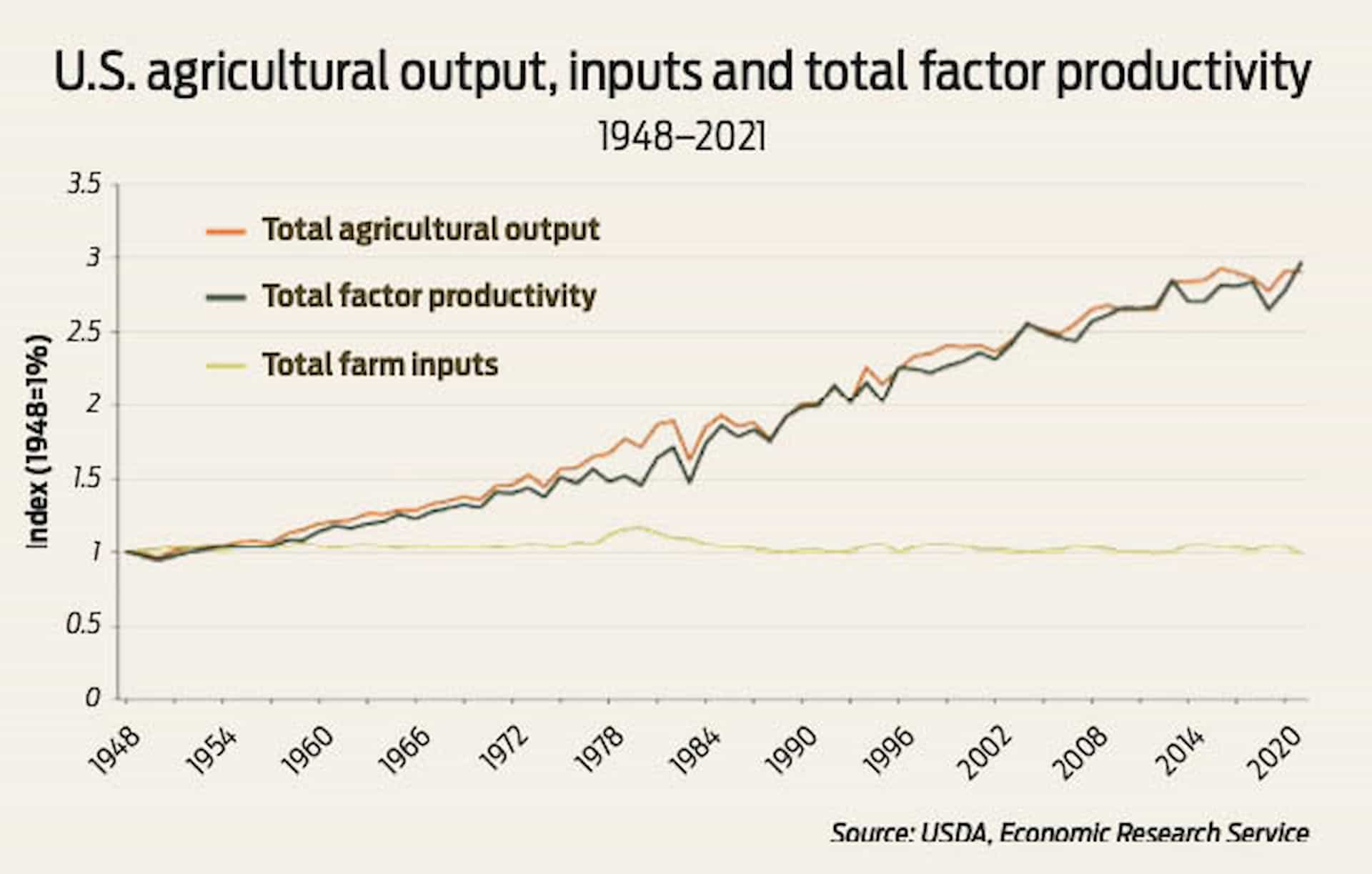Up and to the right
By TF Staff
Farm production’s long-term trends are increased output with fewer inputs
If you’ve been row-crop farming long, you’ve not just heard about the consistent climb of grain yields over time, you’ve lived them. 200 is the new 150, and all that. Thanks to technology and breeding, yield for corn famously climbs almost 2 bushels per acre per year on average.
But what about the big picture? How has overall farm output changed for the long haul?
According to the USDA’s Economic Research Service, from 1948 to 2021, U.S. agricultural productivity increased at an annual rate of 1.49%. Economists at the agency calculate productivity by measuring the difference in the rate of growth of total output relative to the rate of growth of total inputs. Across those seven decades, they looked at outputs including crops, livestock and livestock products. Inputs measured included factors of production—land, labor and capital, plus “intermediate inputs” (fertilizer, pesticides, energy and purchased custom services).
Overall, the math showed total output increased at a rate of 1.46% per year, while the growth rate of total inputs declined 0.03% per year. You can stack it up to increased technology, not just in standard inputs, but also through precision farming, genetics and capital dedicated to improved equipment and land management.
The bottom line: American farmers are producing more with less.

READ MORE FROM THIS ISSUE OF TODAY'S FARMER MAGAZINE HERE.
SEE THIS ARTICLE IN IT'S ORIGINAL FORM VIA FLIP BOOK HERE.